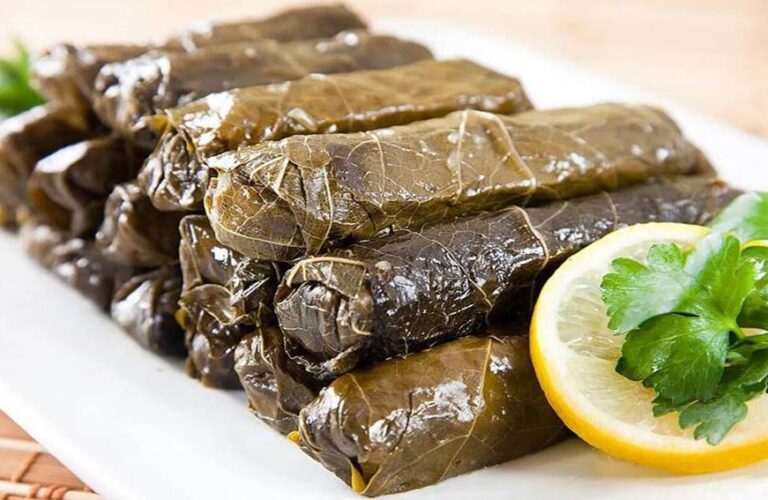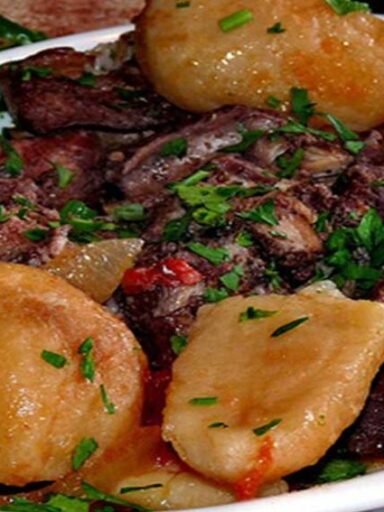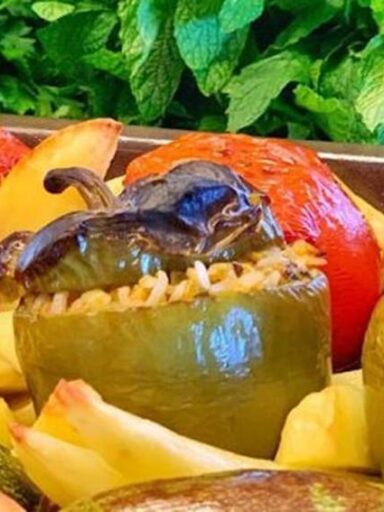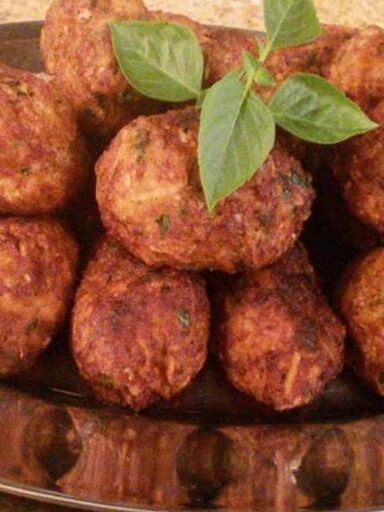A Traditional Dish in Cyprus: Dolmades
Dolmades stuffed vine leaves, are a traditional Cypriot dish that holds a special place in the island’s cuisine. These delicate parcels are both savoury and refreshing, filled with a flavourful mixture of rice, pine nuts, and aromatic herbs. As a result, they have become a beloved part of Cypriot meals, often enjoyed during family gatherings and festive occasions.
Preparing the Dolmades
The preparation of Dolmades stuffed vine leaves is a time-honoured tradition that has been passed down through generations in Cyprus. Moreover, it is a process that requires patience, skill, and attention to detail.
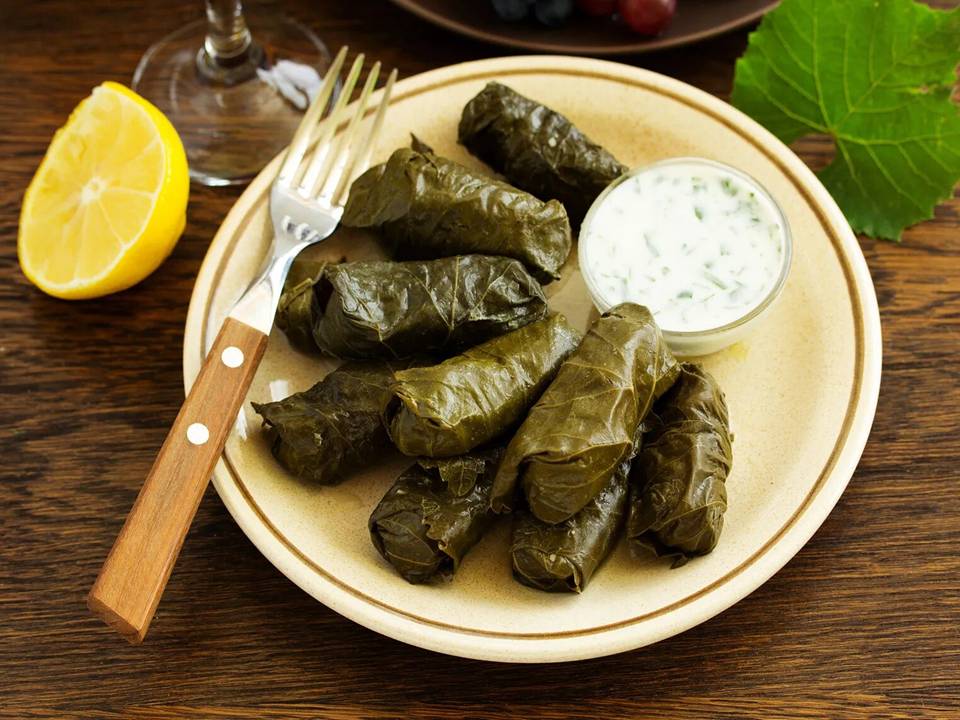
Selecting and Preparing the Grape Leaves
First, cooks carefully select fresh grape leaves, ensuring they are tender and free of blemishes. Next, they blanch the leaves in boiling water to soften them while preserving their vibrant green colour. Afterward, they immediately transfer the leaves to cold water to stop the cooking process and maintain their texture.
Making the Filling
Meanwhile, the filling is prepared with a combination of rice, pine nuts, onions, and a mix of fresh herbs such as dill, mint, and parsley. Additionally, cooks season the mixture with salt, pepper, and sometimes a touch of cinnamon or allspice to create a rich, aromatic flavour. Consequently, the filling becomes the heart of the dish, offering a burst of taste in every bite.
Assembling the Dolmades
Once the grape leaves and filling are ready, the assembly begins. To start, each grape leaf is laid flat, and a small portion of the rice mixture is placed near the stem end. Then, the sides of the leaf are folded over the filling, and the leaf is rolled tightly into a compact parcel. This ensures the filling is securely wrapped inside, creating a neat and uniform shape.
Cooking the Dolmades
After assembling, the Dolmades are arranged tightly in a pot, layer by layer, to prevent them from unravelling during cooking. Following this, a mixture of water, olive oil, and lemon juice is poured over the dolmades. This liquid not only keeps them moist but also infuses them with a tangy, refreshing flavour.
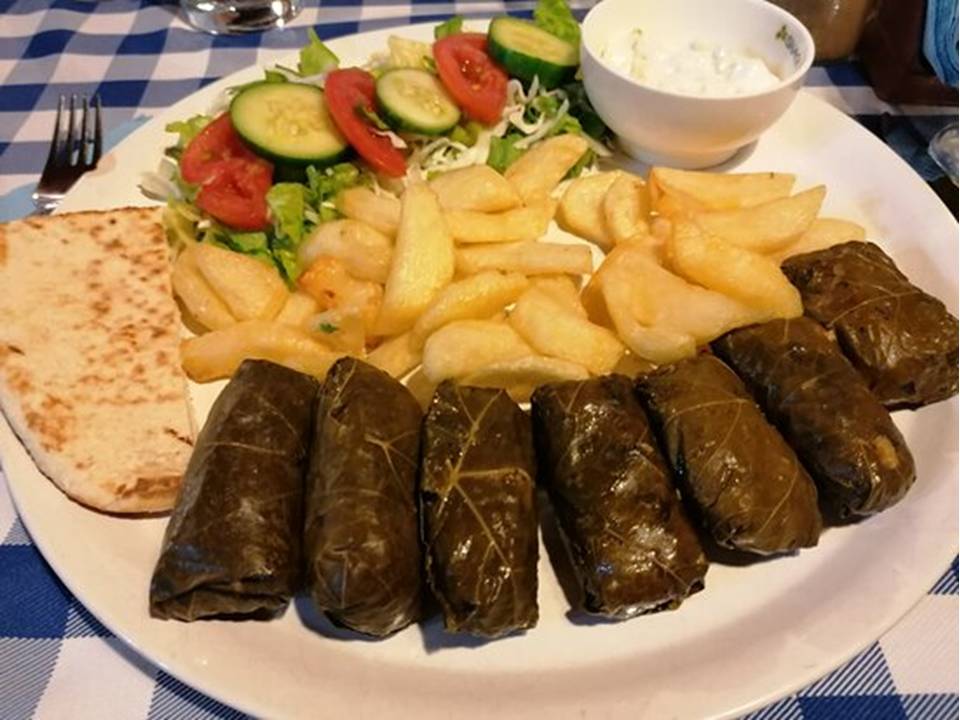
Simmering to Perfection
The pot is then placed over low heat, allowing the dolmades to simmer slowly. As they cook, they gradually absorb the flavours of the cooking liquid, becoming tender and aromatic. Meanwhile, the kitchen fills with the enticing scent of herbs and citrus, signalling that the dish is nearly ready.
The Final Result
Once cooked, the dolmades are tender and bursting with flavour. The grape leaves provide a slightly tangy contrast to the savoury rice filling, creating a perfect blend of textures and tastes. Therefore, each bite offers a harmonious balance of flavours that is both satisfying and refreshing.
The Art of Dolmades
Preparing the Dolmades stuffed vine leaves is more than just cooking; it is a celebration of tradition, skill, and the joy of sharing food with loved ones. Each step, from selecting the leaves to rolling the parcels, reflects the care and dedication that goes into this dish. Ultimately, dolmades bring the flavours of Cyprus to life, offering a taste of the island’s rich culinary culture and the warmth of its people.
How to Make the Dolmades
Ingredients:
1 tablespoon olive oil
2 onions, minced
1 ½ cups uncooked white rice
1 1/2 cups hot water, or as needed to cover
2 tablespoons tomato paste
2 tablespoons pine nuts
1 tablespoon ground cinnamon
1 tablespoon dried mint
1 tablespoon dried dill weed
1 teaspoon ground allspice
1 teaspoon ground cumin
1 (8 ounce) jar grape leaves, drained and rinsed in warm water
Directions:
- Prepare the filling as described above
- Heat oil in a medium saucepan over medium heat. Add onions and sauté until tender, about 5 minutes. Stir in rice, and then add enough hot water to cover. Cover and simmer until rice is halfway cooked, about 10 minutes.
- Remove from the heat and stir in tomato paste, pine nuts, cinnamon, mint, dill, allspice, and cumin. Let mixture cool, about 15 minutes.
- Prepare a large pot by placing a layer of leaves on the bottom; this will protect the dolmades from direct heat during steaming.
- Cut off and discard any grape leaf stems. Place about 1 teaspoon of rice mixture into the centre of a leaf. Fold in the sides, and then roll into a cigar shape. Place into the prepared pot. Repeat to make remaining dolmades.
- Pour in just enough warm water to cover the dolmades. Place an inverted plate on top to prevent them from unravelling during cooking and lose their shape. Cover and simmer over low heat for 30 to 45 minutes, or until rice is totally cooked. Check the water level often and add more as necessary.
Serving the Dolmades
In Cyprus, dolmades are often enjoyed as part of a mezze, which is a selection of small dishes shared among diners. This allows everyone to sample a variety of flavours and textures, making the meal a communal and interactive experience. Furthermore, dolmades can be served as an appetizer or as part of a main meal, showcasing their versatility.
Recommended Wine for Cypriot Dolmades Dish
Xynisteri
Characteristics: Xynisteri is a light, crisp, and refreshing white wine indigenous to Cyprus, often with citrus and green apple notes and a touch of minerality. It has balanced acidity, which pairs nicely with the lemony and herbal notes of dolmades.
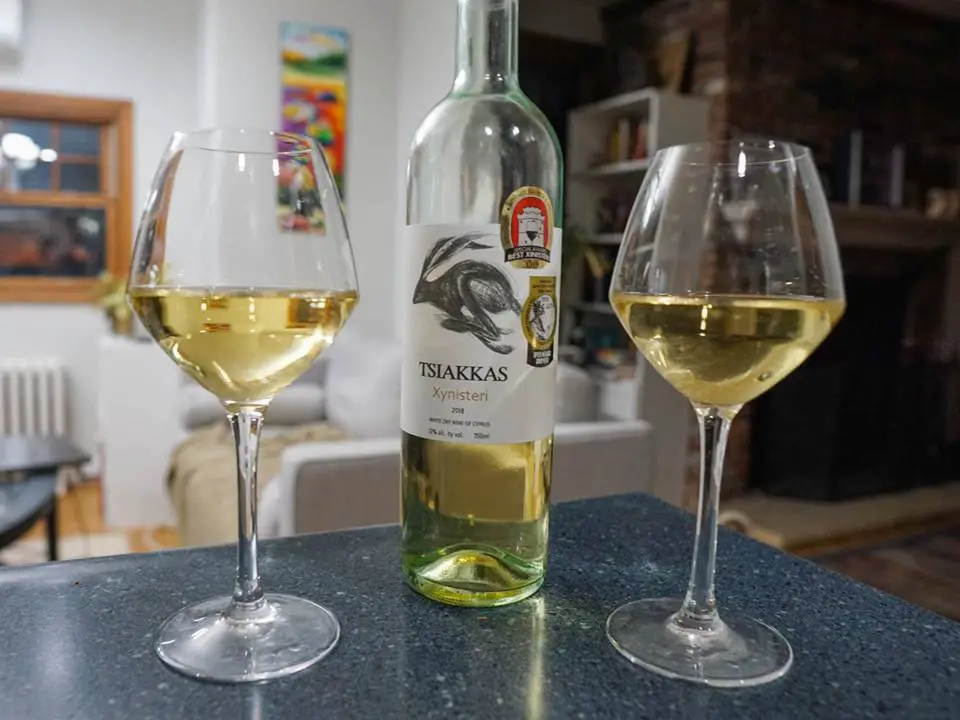
Why It Works: The bright acidity in Xynisteri helps to cut through the olive oil in dolmades and complements the fresh, herbaceous flavours, making it an excellent pairing.
Vasilissa
Characteristics: Vasilissa is another Cypriot white wine grape offering floral and slightly fruity flavours with a fuller body than Xynisteri.
Why It Works: Its floral and fruity notes contrast the savoury and herbal notes in dolmades, while its body holds up well against the dish’s richness.
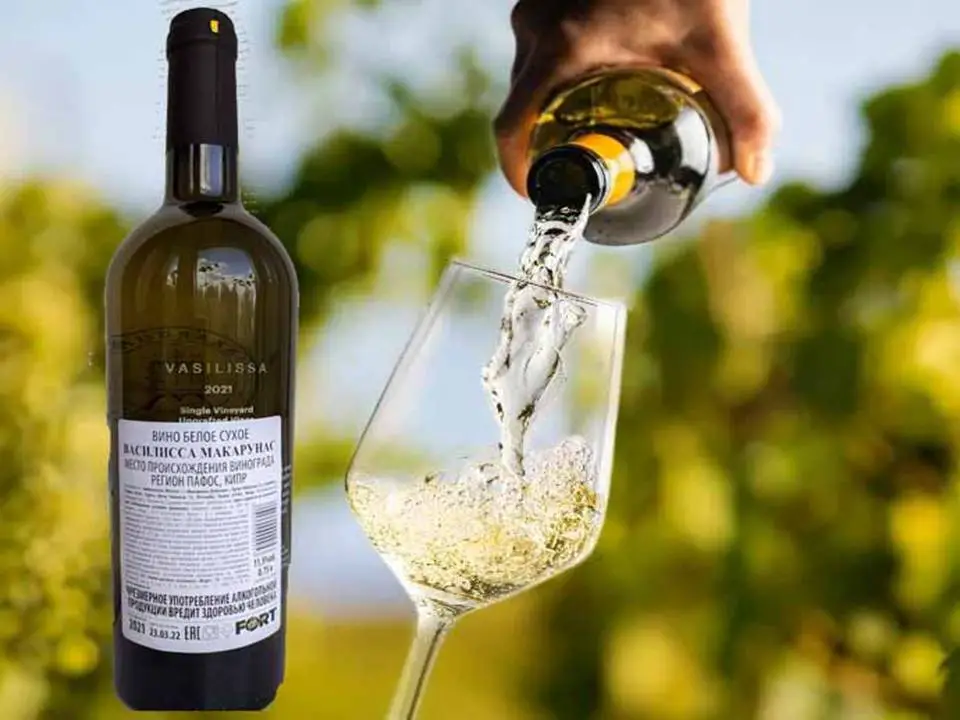
Top Choice:
For a classic pairing, a chilled Xynisteri or a Vasilissa white would enhance the flavours of traditional dolmades, balancing the dish’s rich and herbal elements while keeping the overall taste light and refreshing.

